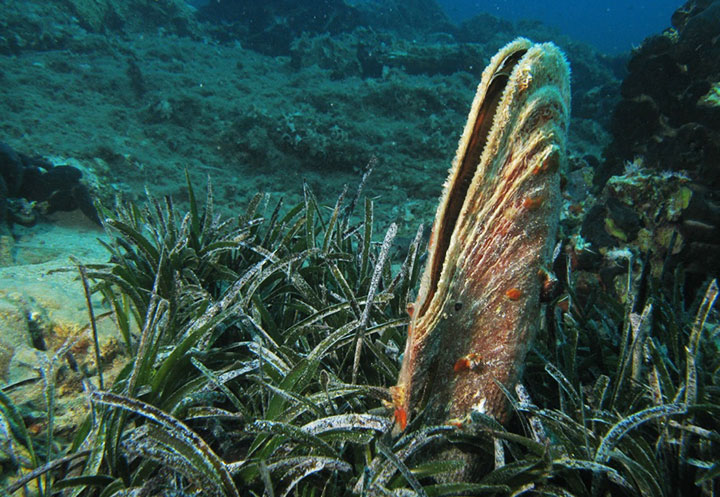
Pinna Nobilis, a species to know and protect
While snorkelling with a mask and snorkel in the waters of the Gulf of Porto Conte and beyond, it can happen that you come across this wonderful marine animal.
It looks like a huge mussel stuck in the seabed, often slightly open.
Pinna Nobilis, commonly known as castaneta, common fin, pen mussel or stura, is the largest bivalve in the Mediterranean Sea and can reach one meter in length.
Like many marine molluscs, it produces filaments with which it anchors itself to the bottom of the sea. These thin and sturdy threads make up the material with which a filament called marine byssus is made, used in the past especially here in Sardinia for weaving precious garments with iridescent colors. Following the protection of the species, the processing of sea byssus has almost completely disappeared.
This protective precaution was introduced precisely because fishing for textile and collecting purposes has decimated the species, pushing it to the brink of extinction.
Like all filterers, to feed itself, it filters the water inside, extracting the substances present. Consequently to this characteristic it accumulates, absorbing them from the sea, large quantities of pollutants and pathogens (if present). For this reason it is used as an indicator of marine pollution, an even more relevant resource that we can recognize in Pinna Nobilis.
Admiring seabeds rich in life and biodiversity is a fantastic emotion when you decide to take a bath with a mask, we see it every time in the eyes of our guests during our excursions but the protection of the natural heritage is something that falls on each of us. we.
If you see someone killing Pinna Nobilis by ripping it from the seabed, perhaps to turn it into a living room trophy, do not hesitate, Sealives invites you to stop him immediately, call the coast guard at 1530 and defend a wonderful species that is increasingly in danger of disappearing due to the selfishness of man.

